Native Australian Animals
A-Z List of Australian Animals
Australia is home to some of the most unique, fascinating, and downright quirky creatures on Earth. From kangaroos that hop across the Outback with babies snug in their pouches, to koalas that sleep up to 20 hours a day, to wombats that famously produce cube-shaped droppings—Australia’s wildlife never fails to amaze. And then there’s the platypus and echidna, two rare mammals that lay eggs? Yes, mammals that lay eggs! Our guide to Australian wildlife is packed with fascinating facts, captivating stories, and stunning wildlife photography.
↓ 90 Amazing Australian Animals with Photos are Listed Below ↓
Kangaroo
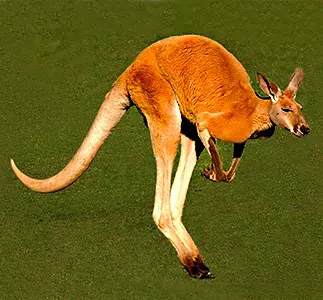
The kangaroo is a large hopping marsupial with triangular upright body, deer-like head, two powerful hind legs, small forelimbs, and long, thick tails. Some can hop at speeds of 70kmh (45mph) and leap up to twice their body height. The kangaroo is the only animal that walks on five legs!
Read More About KangaroosPlatypus
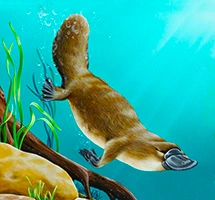
The Platypus is a bizarre aquatic mammal with a bill like a duck, webbed feet like an otter, a tail like a beaver, and it lays eggs like a lizard! But once the baby hatches, the mother feeds it milk like a mammal. The platypus has receptors in its bill that act like a radar to locate its prey underwater.
Read More About PlatypusesKoala
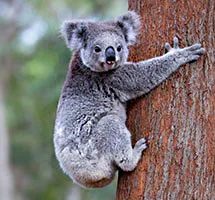
The Koala is a marsupial with thick fur, large fluffy ears, small eyes, a big flat nose, and no tail. It lives in the eucalyptus forest in eastern Australia and sleeps up to 20 hours a day. The koala has paws with opposable thumbs and padded feet. It is sometimes called a Koala Bear, but it is not a bear at all.
Read More About KoalasAmazing Australian Animals Facts
Quokka
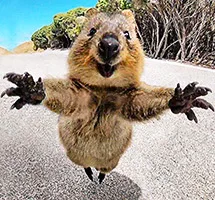
The Quokka is a small hopping marsupial with an almost human-like smile, earning it the nickname “the world’s happiest animal”. It has a rounded body, greyish-brown fur, small ears and large dark eyes. Despite their friendly nature, quokkas should be treated with respect and caution.
Read More About QuokkasEmu

The Emu is a giant, flightless Australian bird with shaggy black feathers, a small head, large orange-coloured eyes and a long neck. It can run at 60kph for long distances. It is the second-largest bird in the world and has a deadly kick which can cause serious injury to a human if provoked.
Read More About EmusEchidna
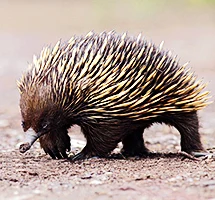
The Echidna is a small, dome-shaped mammal covered in sharp spines. It lays eggs like a reptile, but the mother feeds its young milk like a mammal! The echidna has a rubbery snout with highly sensitive electro-receptors for detecting prey. It uses its sticky tongue to catch ants and termites. It is a monotreme
Read More About EchidnasWombat
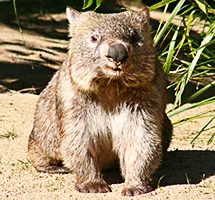
The Wombat is a solidly built burrowing herbivorous marsupial with coarse brown or black fur. It has short, powerful legs with strong claws for digging for food and tunnelling underground. Wombats walk slowly and grunt loudly if threatened. They do cube-shaped poop!
Read More About WombatsBlobfish
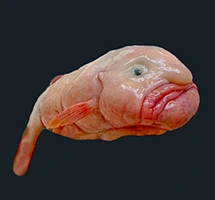
Blobfish are the ugliest animals in the world. They have jelly-like bodies and live in the ocean at depths of over 1,000m, where they look like tadpoles. On land, its body collapses, and it looks like a slime blob.
Read More About BlobfishCassowary

The cassowary, with its dagger-like claws and powerful kicks, is the most dangerous bird in the world. It is over 2m tall and weighs up to 59kg. Its body is covered with long, glossy black hair-like feathers, and it has no wings. The cassowary lives in rainforests. It makes deep, rumbling and booming sounds.
Read More About CassowariesBlue Tongued Lizard
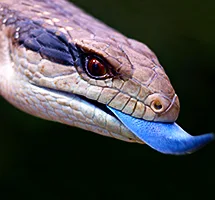
The blue-tongued lizard gets its name from its distinctive bright blue tongue, which it sticks out to scare off predators. This omnivorous, slow-moving, medium-sized lizard lives in diverse habitats, from grasslands to urban gardens. It is a popular pet because of its docile nature and distinctive appearance.
Read About Blue Tongued LizardsRed Bellied Black Snake
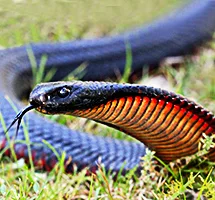
The Red-bellied Black Snake is a sleek, venomous snake with a shiny black upper body and a red belly and sides. It is carnivorous and eats small animals. It has small, hollow syringe-like venom-injecting fangs. It accounts for 16% of all snakebites in Australia, but its venom is rarely fatal to humans.
Read More About Black SnakesKookaburra
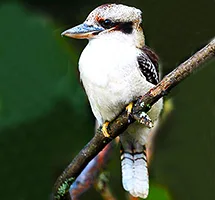
The Kookaburra is a large terrestrial kingfisher with a large head and a prominent beak. It has a loud and distinctive bird call that sounds like human laughter. Hence its other names, Laughing Kookaburra and Laughing Jackass. Kookaburras eat lizards, frogs, snakes and other small animals.
Read More About KookaburrasTasmanian Devil
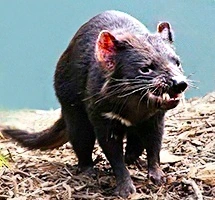
The Tasmanian devil is a marsupial about the size of a small dog. It is known by this name because of its blood-curdling screams, eerie growls, black colour, foul odour and aggressive behaviour. It is the world's largest carnivorous marsupial and prefers to eat dead animals. is the world's largest carnivorous
Read More About Tasmanian DevilsHeadless Chicken Monster
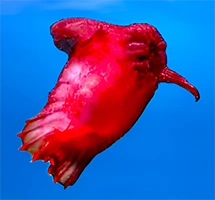
The Headless Chicken Monster is a bioluminescent deep-sea swimming sea cucumber. It gets its nickname because it sometimes looks like a decapitated chicken. It is also called the Spanish dancer because of its graceful swimming movements. It has a soft body with sticky, transparent skin.
Read Headless Chicken MonstersDingo
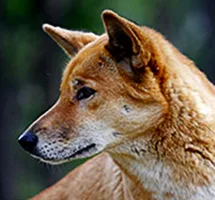
The Dingo is a medium-sized Australian wild dog with a lean, muscular body, yellow, red or black fur, pointed ears, and a bushy tail. It is an intelligent, opportunistic hunter and scavenger that is highly adaptable and survives in various environments. The dingo is Australia's apex predator.
Read More About DingoesCrocodile
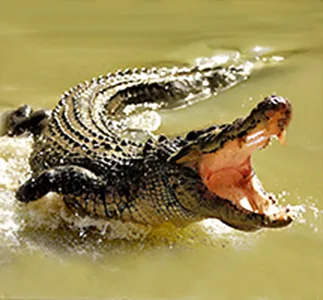
Salt-water crocodiles are ferocious amphibious, carnivorous reptiles with scaly skin and a broad snout crammed with pointed teeth. They are one of the deadliest predators on earth. Crocodiles live in warm and temperate climates in freshwater rivers, estuaries, and creeks.
Read More About CrocodilesEastern Brown Snake
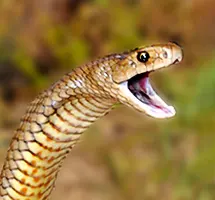
Eastern brown snakes are the second most venomous snake in the world and responsible for the most snakebite fatalities in Australia. They have slender bodies brown, tan or burnt orange in colour. They feed on vertebrates, frogs, lizards, birds, mammals, and eggs.
Read About Eastern Brown SnakesShark
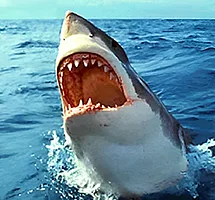
The Shark has a streamlined body with a cartilaginous skeleton. It has sharp, serrated teeth and a powerful jaw. It has an incredible sense of smell and can detect blood from kilometres away. It also has an organ called the lateral line, which senses vibrations in the water.
Read More About SharksWallaby
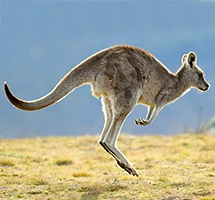
Wallabies are small to medium-sized hopping marsupials with compact legs and short forelimbs. They are almost identical to kangaroos but are smaller, have more fur, and live in wooded and rocky environments. Wallabies eat leaves and flowers, ferns, moss, and even insects.
Read More About WallabiesMimic Octopus
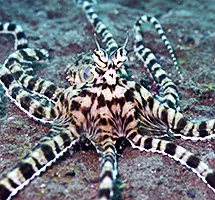
The mimic octopus is a master of disguises. It can change its appearance to imitate many dangerous sea creatures to frighten predators away. It has nine brains, blue blood and three hearts. It is so confident of its disguises that doesn't attempt to hid from its predators.
Lean More about Mimic OctopusesFrilled Lizard
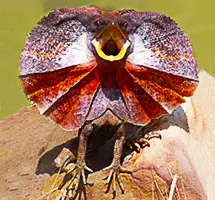
The frilled lizard is a tree-dwelling lizard that ruffles out its scaly red and yellow frill to scare off predators. If this display doesn't scare off an attacker, it runs away quickly. It is about a meter in length and weighs about half a kilo. The frilled lizard eats insects, smaller lizards, and mammals.
Read More About Frilled LizardsPossum
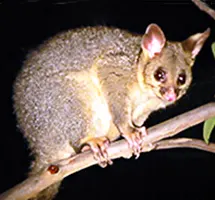
Possums are nocturnal arboreal marsupials. They range in size from the tiny pygmy possum, which is 70mm, to the brushtail possum which is a meter in length. They have soft, silver-grey fur, dark orange to dark brown. They have excellent night vision, hearing, and a sense of smell.
Read More About PossumsBox Jellyfish
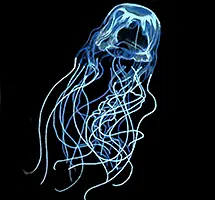
Box jellyfish are the most venomous animals in the world. Its sting can kill a human in less than 4 minutes. They are pale blue and hardly visible. They get their name from their four-sided box-like shape. Its has long tentacles lined with thousands of deadly stinging cells called nematocysts.
Read More About Box JellyfishTasmanian Tiger
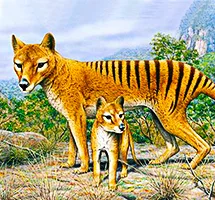
The Tasmanian Tiger, also known as the Thylacine, was a carnivorous marsupial that looked like a yellowish-brown dog with a stiff tail and dark stripes on its back. Humans caused its extinction at the start of the 20th century by hunting, habitat destruction and introducing diseases.
Read More About Tasmanian TigersRedback Spider
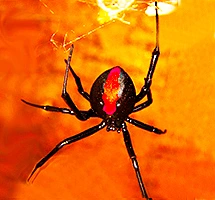
The Redback Spider is the second most dangerous spider in the world. Females, which are deadly, have black pea-shaped bodies with a red stripe on top of their bodies. The male is tiny and harmless is often eaten by the female after mating. A bite from a female redback spider can kill a human.
Read More About Redback SpidersGouldian Finch
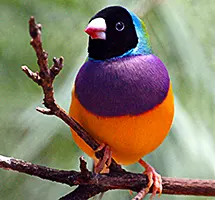
Gouldian finches are beautifully coloured grass finches. They were once found by the millions but are nearly extinct in the wild. Gouldian finches feed on both ripe and partially-ripe grass seeds.
Read More About Gouldian FinchesSugar Glider
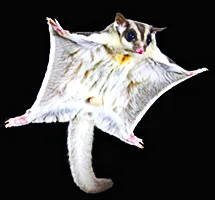
Sugar gliders are small arboreal, nocturnal marsupial mammals that glide from tree to tree and eat the sugary nectar of plants. They are about 250mm long and very agile. It can glide up to 90 meters from tree to tree.
Read More About Sugar GlidersBlack Swan
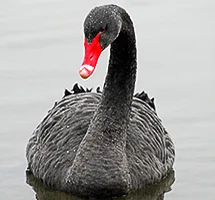
The Black Swan is a large water bird with striking black plumage, a long neck, and a red bill. It makes high-pitched, musical bugle-like sounds. The Black swan is omnivorous, feeding on aquatic plants, insects, and small animals. The term "black swan event" is named after these birds.
Read More About Black SwansMarsupial Mole
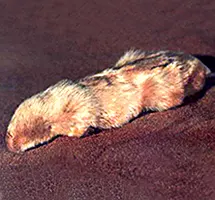
Marsupial moles literally swim underground through the sand. They have no eyes or ears and have a bony shield to protect their noses. They are probably one of the most unusual and least understood animals in the world.
Read More About Marsupial MolesStonefish
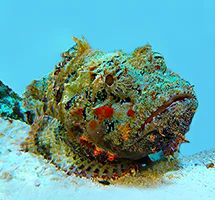
Reef stonefish are the most venomous fish in the world. Spines along their backs inject highly toxic and intensely painful venom. They camouflage themselves to blend effortlessly into their environment.
Read More About StonefishCuttlefish
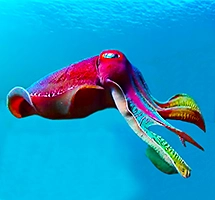
Cuttlefish are intelligent creatures and experts at using colour, shape, and texture for camouflage. They can put on spectacular colour and light displays. Cuttlefish are related to squid and octopuses.
Read More About CuttlefishThorny Devil
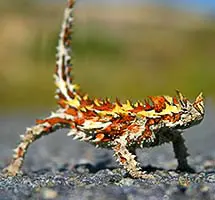
Thorny Devil lizards are armoured with spikes and have excellent camouflaging skills. These attributes offer them superior protection from would-be predators. They are about 20cm in length and only eat black ants.
Read More About Thorny DevilsAntechinus
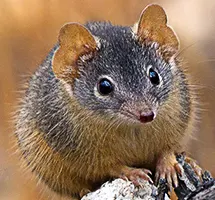
Antechinuses are little marsupials with pointy noses. Their appearance is similar to a mouse. They are ferocious hunters, preying on insects and small animals. They have a suicidal, oversexed sexual behaviour.
Read More About AntechinusesGreater Bilby
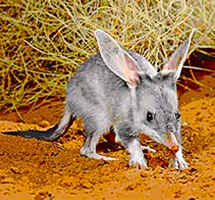
Greater bilbies are small, nocturnal, omnivorous marsupials with rabbit-like ears and pointy pink snouts. They have muscular forearms and claws for digging their burrows and uncovering buried food.
Read More About Greater BilbiesRed Kangaroo
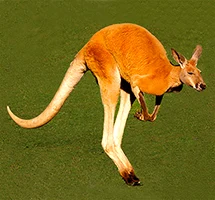
Red kangaroos are the largest marsupials and the largest hopping animals in the world. Standing up to 2 meters tall, it can hop at over 60 kph.
Read More About Red KangaroosSwift Parrot
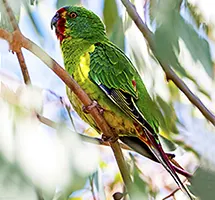
Swift parrots are small green and yellow birds with long pointed wings. These rather noisy birds are the fastest parrots in the world.
Read More About Swift ParrotsLyrebird
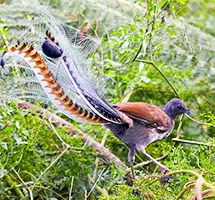
Lyrebirds are ground-dwelling pheasant-sized songbirds that are amazing mimics. They can imitate chainsaws, mobile phones, and horns.
Read More About LyrebirdsNumbat
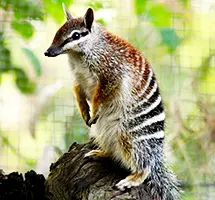
Numbats are small marsupial anteaters that eat termites. They weigh about 700 grams. They forage for termites during the daylight.
Read More About NumbatsGreat Barrier Reef
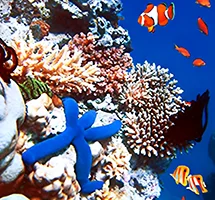
The Great Barrier Reef is the largest and most spectacular coral reef in the world. It has the world's most diverse range of underwater animals.
Read More About Great Barrier ReefLeadbeater's Possum
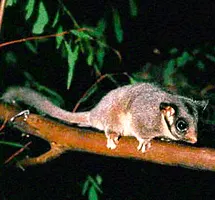
Leadbeater's Possums are fast-moving marsupials that live high in the forest canopy and leaps gracefully from one tree to another.
Read About Leadbeater's PossumSpotted Quoll
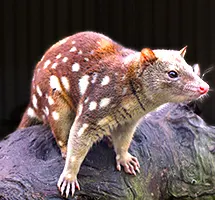
Spotted-tailed Quolls are the size of a large cat. They have many sharp little teeth. They are the second-largest carnivorous marsupial.
Read More About Spotted QuollsGilbert's potoroo
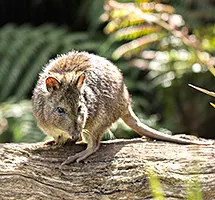
Gilbert's potoroo is the world's rarest marsupial. It has long front limbs with craved claws with which its digs for underground fungi (truffles).
Read More About Gilbert's PotoroosDugong
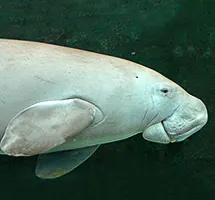
Dugongs are plant-eating marine mammals. Because of their sleek appearance and large teats, ancient sailors thought they were mermaids.
Read More About DugongsBushtail Possum

The brushtail possum is a semi-arboreal nocturnal marsupial. It has a bushy prehensile tail, which it uses to grasp onto branches.
Read More About Brushtail PossumsFunnel Web Spider
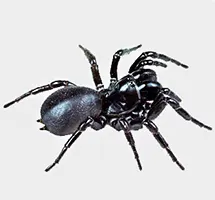
The Sydney funnel web is the deadliest and most aggressive spider in the world. Its bite can kill a human in 15 minutes.
Read More Funnel Web SpidersBandicoot
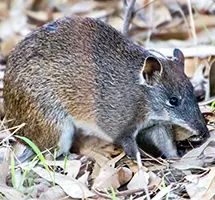
Bandicoots are small omnivorous marsupials with pointy snouts, large hind feet, and hop. There are 20 species of bandicoots in Australia.
Read More About BandicootNight Parrot
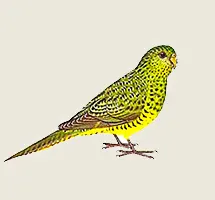
Night Parrots are small ground-dwelling nocturnal parrots. They are the world's most mysterious and elusive birds. Only 250 survive.
Read More About Night ParrotsCorroboree Frog
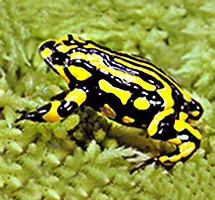
Corroboree frogs are highly poisonous amphibians with striking yellow and black longitudinal markings. These frogs walk rather than hop like most other frogs. There may be as few as 50 left in the wild.
Read More About Corroboree FrogsGiant Clam
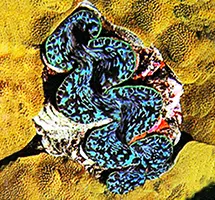
The Giant clam is the world’s largest sessile mollusc. It can grow up to 1.5 meters and weigh 230 kilos. It has large protruding blue iridescent lips.
Read More About Giant ClamsRingtail Possum
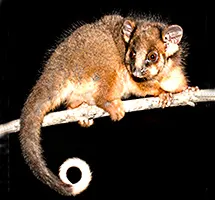
The Ringtail possum is a small arboreal, nocturnal marsupial that holds its tail in a tight coil. It has two thumbs on each front paw.
Read More About Ringtail PossumTawny Frogmouth
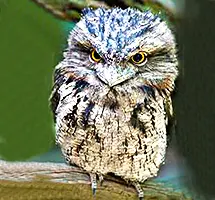
The Tawny Frogmouth is a nocturnal insect hunter that looks like an owl. It camouflages itself by fluffing its feathers to look like a dead tree stump.
Read More About Tawny FrogmouthsMusky Rat-Kangaroo
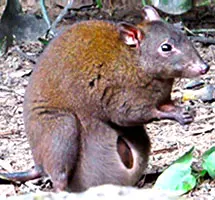
The Musky rat-kangaroo is the smallest macropod and the only kangaroo that doesn't hop. As its name suggests, it looks like a rat and has a musky smell.
Read About Musky Rat KangaroosClownfish
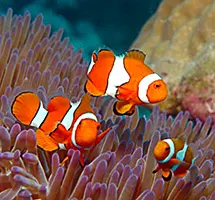
Clownfish come in a wide variety of colours and usually have vertical bands across their bodies. They live amongst poisonous sea anemones.
Read More About ClownfishTree Kangaroo
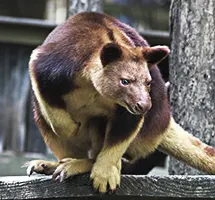
Tree kangaroos are kangaroos that live in trees. They climb by wrapping the forelimbs around a tree and hopping up with their powerful hind legs.
Read More About Tree KangaroosSnapping Turtle
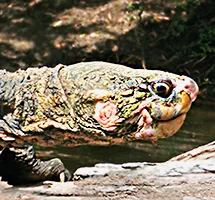
This turtle breathes through its bum, yes its anus, and it can remain submerged for days. It's about 45cm long and lives to over 100 years.
Read More About Snapping TurtlesStick Nest Rat
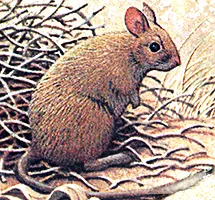
The white-tipped-stick-nest-rat lived in central Australia. It built its nest of sticks, which it added to over the years, making a massive nesting mound.
Read More About Stick Nest RatsAntilopine Kangaroo
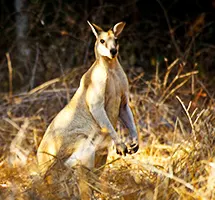
The antilopine kangaroo is the only kangaroo that lives entirely in the tropics. It has a face that looks like that of an antelope, hence its name.
Read About Antilopine KangaroosSea Anemone
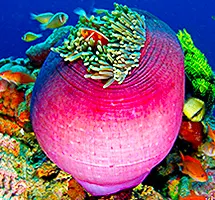
Sea anemones are small marine invertebrates closely related to coral and jellyfish. They catch prey with their venomous tentacles.
Read More About Sea AnemonesPenguin
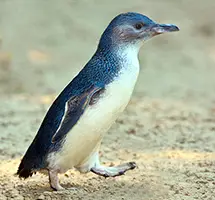
Fairy Penguins are the smallest penguin species in the world. It goes fishing during the day and eats small fish and crustaceans.
Read More About PenguinsLesser Bilby
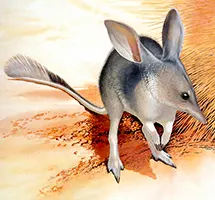
Lesser Bilby became extinct in 1950 due to rabbits and introduced predators. They were nocturnal.
Read More About Lesser BilbiesWoylie
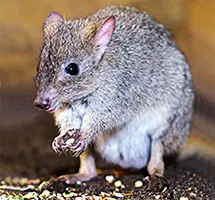
The woylie is a nocturnal marsupial with a long tail, which it wraps around a bundle of nesting material and transports it home.
Read More About WoyliesFlying Fox (Bat)
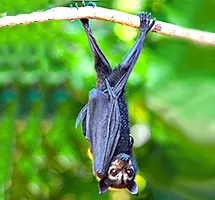
Flying Foxes are relatively large flying herbivorous mammals. Most do not use echolocation but instead rely on their keen sight.
Read More About Flying FoxesRakali (Water Rat)
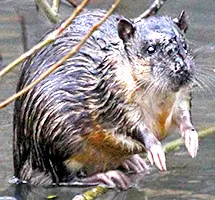
The Rakali is a semi-aquatic placental mammal. It lives in burrows on the banks of rivers. It eats insects, fish, crustaceans, snails, and frogs.
Cockatoo Parrot
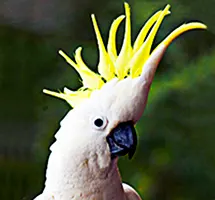
The Sulphur-crested Cockatoo is a very noisy, large white parrot with a large, yellow crest that it can fan out. It eats berries, seeds, nuts and roots.
Blue-Ringed Octopus
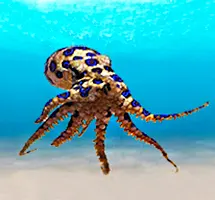
The blue-ringed octopus bite is painless and may go unnoticed. However, its toxin acts quickly. Death may occur in as little as 30 minutes
Tiger Snake
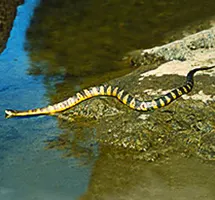
Tiger snakes are large, aggressive snakes responsible for the second-highest number of bites in Australia. Their venom is neurotoxic.
Goanna
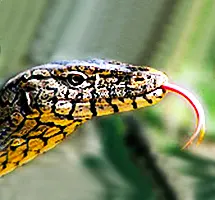
The goanna is the largest lizard in Australia and the fourth-largest in the world. If threatened, it whips its tail, bites, and claws its victim.
Dolphin
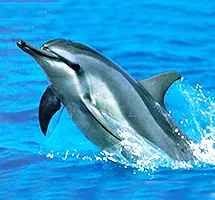
Dolphins are very vocal, playful, intelligent, social animals that live in groups of up to 15 animals. They feed on invertebrates, fish, and squid.
Parrot
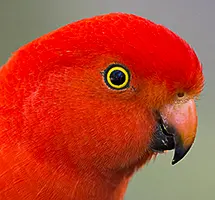
Australia has 56 species of colourful parrots. It has two-thirds of the world’s cockatoos and around one-eighth of the world’s parrots.
Sea Lion

Australian sea lions have stocky bodies, a large head, and short, narrow flippers. The male is twice as large as the female. They hunt fish and squid.
Red-eyed Tree Frog
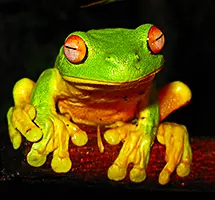
Red-eye tree frogs live in Australian rainforests and wetlands. They are nocturnal hunters that feed on moths and insects.
Taipan
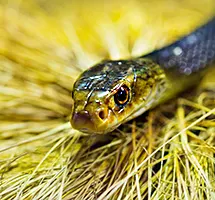
Taipans are large, fast-moving snakes. They are some of the most venomous snakes in the world but prefer to avoid confrontation with humans.
Peacock Mantis Shrimp
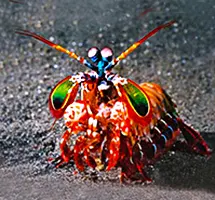
Peacock mantis shrimps have the fastest punch in the world, creating small implosions in the water that generate heat, light, and sound.
Handfish
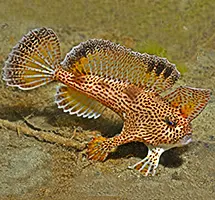
Handfish prefer to walk on their pectoral and pelvic fins rather than swim. They live at depths of 5-40m and eat crustaceans and worms.
Red-fronted Parakeet
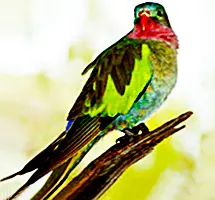
Red-fronted parakeets were quite common till about 1879. They became extinct because of hunting by humans and as a result of the feral cat.
Whale
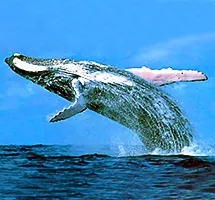
Humpback whales travel up from the Antarctic to give birth and feed their young. They can grow to 12 – 16 metres and weigh 36,000 kgs.
Plains Wanderer
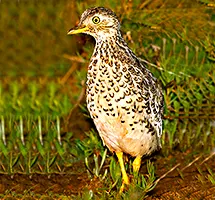
Plains wanderers are small quail-like birds that live in semi-arid grasslands. They prefer to run rather than fly and fall easy prey to foxes.
Loggerhead Turtle
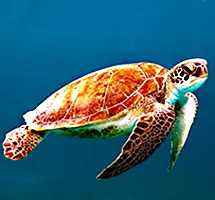
Loggerhead Turtles are the largest hard-shelled turtles in the world. They are carnivorous, feeding on shellfish, crabs, sea urchins, and jellyfish.
Eastern Bettong
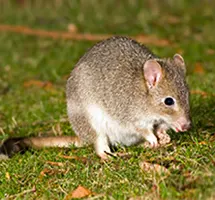
The eastern bettong became extinct on the mainland in the 1920s as the result of the introduction of the red fox and rabbit.
Gastric-brooding Frog
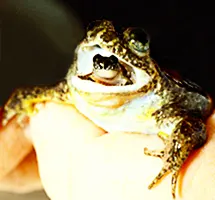
Gastric-brooding frogs incubated their babies in the mother's stomach. They became extinct in the mid-1980s due to a pathogenic fungus.
Green Turtle
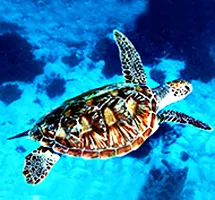
Green turtles feed on seagrasses, but they also eat the venomous box jellyfish. They get their name from the colour of their fat.
Textile Cone
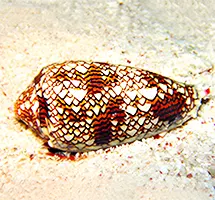
The Textile Cone's harpoon-like tooth can pierce the skin, rubber gloves and wetsuits. Its venom causes respiratory paralysis and eventual death
Leatherback Turtle
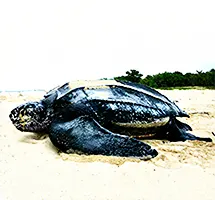
It is the largest turtle of them all. It is called a leatherback because it doesn't have a hard shell but has leathery skin. It eats jellyfish and invertebrates.
Introduced Animals

Introduced animals are those brought to Australia by humans. The first of these was the dingo, a wild dog. Others include cattle, sheep, camels, horses, rabbits, and foxes. Some of these have had a disastrous impact on the Australian ecosystem.
Read More About Introduced AnimalsAustralian Marsupials

There are more than 330 species of marsupials, ranging in size from the 2.1-meter tall red kangaroo to the tiny 6 cm planigale weighing about as much as a teaspoon of sugar). Marsupials inhabit various ecological niches in trees, on the ground, and underground.
Read More About MarsupialsNocturnal Animals
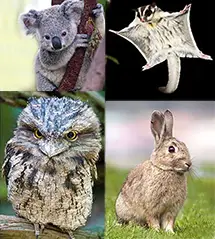
Most native Australian animals are nocturnal; they are only active when its dark. This helps them avoid the extreme daytime heat and conserve water in the dry Australian environment.
Read More About Nocturnal AnimalsEndangered Animals

There are over 300 species of Australian animals that are endangered and could vanish forever. Unfortunately, due to human activities, the number of species becoming extinct has accelerated at an alarming rate.
Read About Endangered AnimalsExtinct Animals
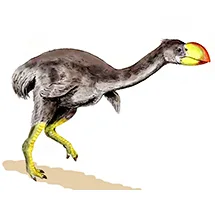
Extinction is a natural process of evolution, but humans have drastically accelerated the rate. Many Australian megafauna vanished after the first Aboriginal peoples arrived, and since European settlement in 1788, hundreds, if not thousands, more native species have been lost.
Read About Extinct AnimalsWhat Makes Australian Animals Unique?
The reason Australia has such unique animals was its long isolation from the rest of the world. For millions of years, the Australian continent was so far away from any other landmass that there was no possibility for new types of animals to get to it. So the animals that were already on the continent evolved, in isolation, into animals most suitable for the Australia's harsh, dry environment.
Native Australian Wildlife

Photo: Quokka - the happiest animal
Ever wondered what animals are really native to Australia? Generally speaking, it is any animal that has been in Australia before the arrival of humans. The reason this definition is the best is because animals such as the koala and emu have been in Australia for millions of years and are unquestionably native. The dingo, on the other hand, which is considered native by some, was only brought to Australia by humans about 5,000 years ago. Many other animals, such as camels and rabbits, were introduced by European settlers less than 200 years ago. These animals are definitely not native to Australia.
There Were No
Mice, Apes & Monkeys
in Australia
Until Europeans came to Australia in 1788, there were no hoofed animals (like horses, cattle, goats, deer, etc.) in Australia. There were no apes or monkeys in Australia either.
Rats and mice were the only animals that the Europeans didn't bring intentionally. They arrived as stowaways on ships.
Australian Mammals

Photo: Kangaroo hopping
There are three types of mammals in Australia. These are monotremes, marsupials, and placentals.
Monotremes first appeared between 145 and 99 million years ago and are the oldest type of Australian mammals. Two out of the five known species of monotremes in the world live in Australia. The echidna and platypus are two such animals found in Australia.
Marsupials appeared about 64-65 million years ago and are the second oldest type of mammal found in Australia. They occupy every niche of the Australian habitat and range from the large red kangaroo to marsupials smaller than a mouse.
Placental mammals are relatively recent arrivals to Australia. Bats were the first to arrive, getting here about 23 million years ago. Rodents arrived about 5-10 million years ago. These animals reached Australia by flying or hitching a ride on floating debris and crossing the oceans that separated Australia from Asia as Australia stated drifting slowly closer to Asia. These placental mammals make up a very small percentage of the total mammalian population. Humans introduced several animals. The dingo was the first of these, coming here about 5,000 years ago. Beginning in 1788, many types of placental mammals such as cattle, foxes and rabbits were brought to Australia.
Australian Amphibians and Reptiles

Photo: Blue-tongue lizards
Australia has many amphibians and reptiles found nowhere else in the world.
Lizards – There are over 700 species unique to Australia alone.
Snakes – Australia has 140 species of land snakes and 32 species of sea snakes. Of these about 100 are poisonous snakes. The bite from about 12 of these can be fatal to humans. The taipan and red-bellied black snake are some such poisonous snakes.
Frogs – Four families of native frogs, numbering 230 species, inhabit the continent. 135 of these are unique to Australia.
Crocodiles – Australia has two species of crocodiles. The Saltwater crocodile is the world's largest and can weigh as much as 1,000 kilos and is known to attack humans. Freshwater crocodiles are much smaller and do not attack humans.
Turtles – There are 35 species of freshwater turtles. Six species of sea turtle also visit the coastlines.
Australian Birds

Photo: Australian red parrot
Australia has 800 species of birds; of these, 350 are only found in Australasia.
Ratites such as the emu and cassowary, are large flightless birds similar to the ostrich. The Emu lives in the Australian Outback. And the critically endangered cassowary lives in the tropical rainforests of Australia.
Megapods such as the Mallee fowl trace their ancestry as far back as Gondwanan time. These stocky birds look somewhat like chickens, but they have small heads and large feet (that's why the name "megapod" means big-feet). These birds are usually found in forested areas.
Parrots unique to Australia comprise nearly 20% of the world's known species. These include the cockatoo and the almost extinct night parrot, which lives in the Australian desert.
Other birds, such as Kookaburras, are the world's largest kingfishers.
All Rights Reserved. (Last Updated: Aug 28, 2025)